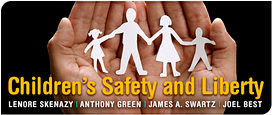I am proud of my work as a trial attorney, as a consumer advocate, and as an officer of a charitable organization, World Against Toys Causing Harm, Inc., dedicated to the cause of child safety. I am proud that lawmakers over the years, with attorneys and all concerned citizens, have made a difference. Ms. Skenazy herself points to safer cars, seat belts, helmets, flame-retardant children’s sleepwear, and countless other examples of improved safety leading to saved lives. As attorney Gerry Spence so aptly stated, “Without trial lawyers and fair courts and unbiased juries to hear our cases, we will be rewarded with the same justice that people across the world experience – no justice at all, not even the empty promise of it.”
Mr. Green eloquently points out that Ms. Skenazy again makes her points through exaggerations, and she now tries to demonize the messenger: “This is how a trial lawyer thinks,” she writes. Our legal system helps shed light on behind-the-scenes dealings of corporations and others that disregard the safety of our country’s children and all citizens. For example, the true extent of the Catholic Church sex abuse scandal was uncovered only when brave victims, with their counsel, obtained internal documents and testimony under oath, otherwise unavailable to the public.
Of course, the argument can always be taken to extremes by alleging “unusual and unpredictable” circumstances, however this is not representative of the ongoing discussion, which focuses on preventable injuries and deaths.
A juror who sat on an important workplace safety case said it best: “It is already difficult enough for ordinary people to take on the corporations that do them harm. Why would anyone ever suggest that … we should take the slingshot away from David and hand it to Goliath?” This is how a concerned citizen thinks.

